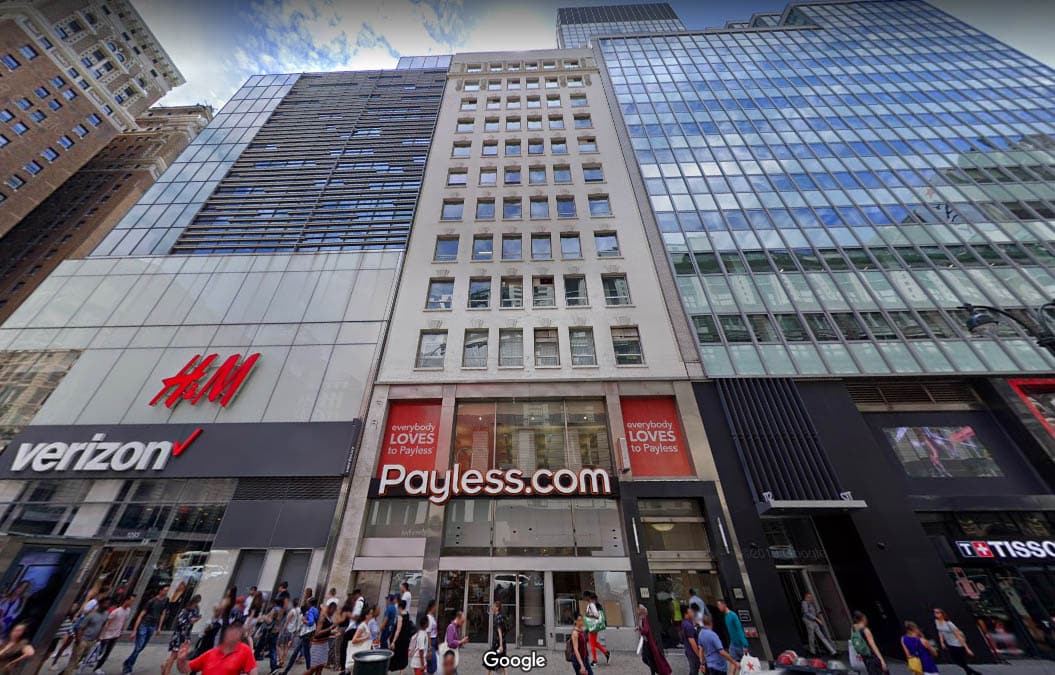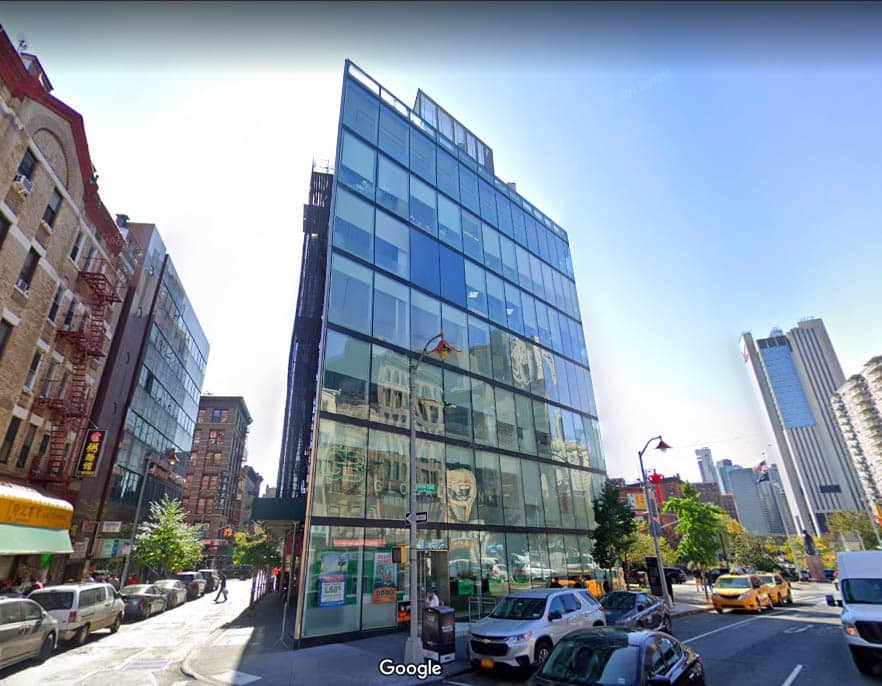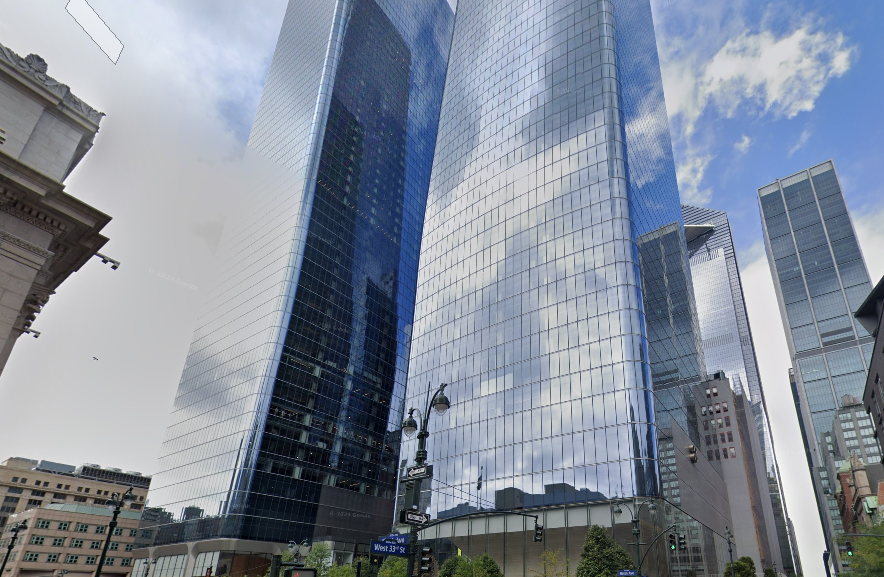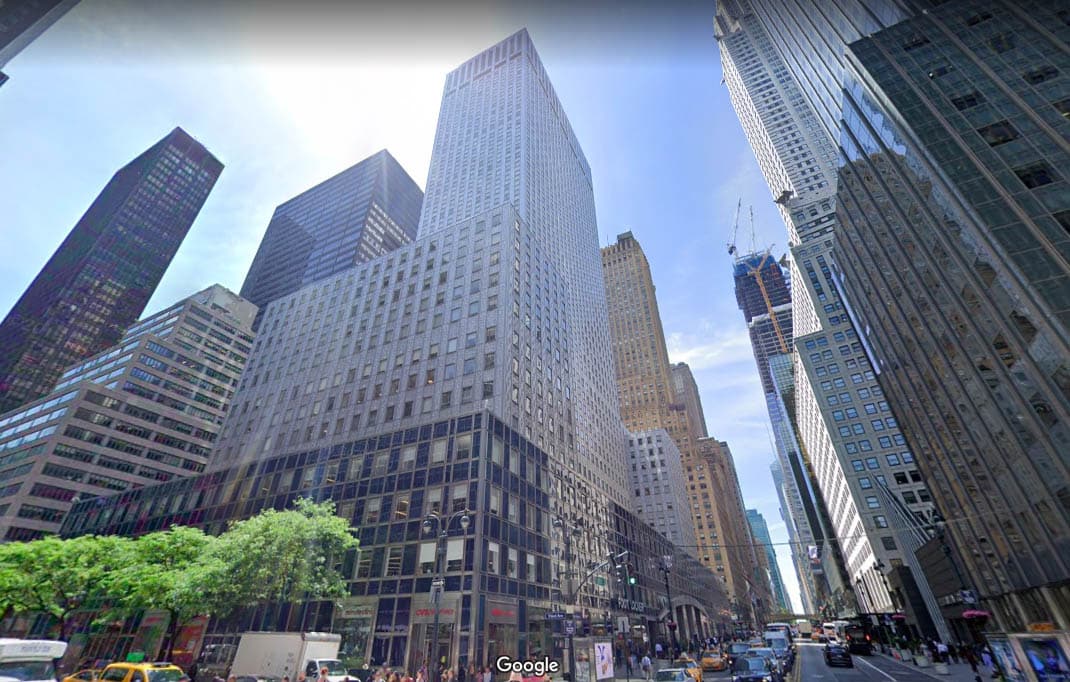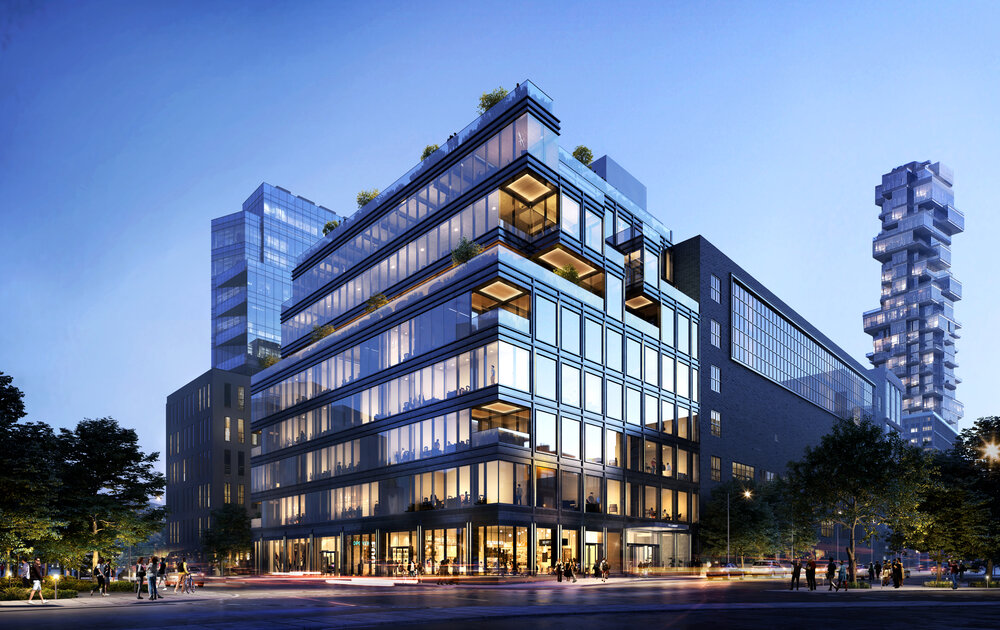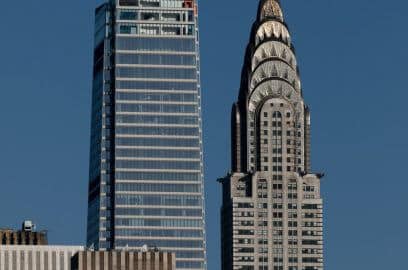A silent tug-of-war occurs in the beating heart of global commerce – New York City. It’s not about office spaces or the latest tech start-ups but instead about the often overlooked yet all-important commercial property taxes. Like an unpredictable ocean, these taxes rise and fall. Tenants often face the burden, prompting them to consider friendlier tax harbors like Florida or Texas. With the city facing a budget deficit, understanding the 2023 commercial property taxes landscape in NYC is more critical than ever.
So we’ve analyzed the tax bill information released by the NYC Department of Finance on June 3rd, 2023. Our exclusive analysis, the first of its kind in the market, includes a comprehensive comparison of 2020 figures and their 2023 counterparts, giving you a clear trajectory of commercial property taxes. Our list of the top 50 tax-contributing office buildings in 2023 will provide fascinating facts and figures that say a lot about where the market was, where it is, and where it could go.
2023 Commercial Property Taxes: Assessing NYC’s Top 10
It’s all about numbers in commercial real estate, especially when dealing with 2023 commercial property taxes in New York City. First, let’s dive into the facts and figures behind the top 10 and see what changed between 2020 and 2023.
The Top 2 Remained Steady: General Motors and MetLife Buildings
An intriguing constant in NYC’s constantly evolving tax landscape, the top two positions have remained unchanged since 2020.
The General Motors Building at 767 Fifth Avenue came in at number one once again. Its taxes remained relatively steady, fractionally declining from $83,071,871 in 2020 to $82,914,747 in 2023.
Second place again was the MetLife Building at 200 Park Avenue. However, it saw a larger tax increase of 5.38% from $58,137,658 in 2020 to $61,264,780 in 2023.
The Stellar Leap: 111 Eighth Avenue
Chelsea’s Google-owned 111 Eighth Avenue made the largest leap in the top 10 and tied for the largest in the top 50. It now holds the 3rd spot after holding the 8th in 2020. Perhaps its 21.67% increase in taxes paid from $45,410,501 in 2020 to $55,251,862 in 2023 explains why.
The tax hike in this building is a major issue because Google are not just tenants – they’re the landlords. Unlike many Manhattan companies, Google took the rare step of buying their property, tying them closely to the city and its tax landscape. With thousands of employees to consider, a tax increase exceeding 20% over three years could significantly eat into their operating income. Moreover, being the building owners makes a potential exit strategy more complex, they can’t simply break a lease and move out – they’re significantly invested.
The Game of Musical Chairs: Other Notable Shifts
The landscape is anything but static below the top three. In the 4th spot, we find 1221 Avenue of the Americas, up from 6th in 2020. Meanwhile, 630 Fifth Ave lands at 5th in 2023, following an absence of tax data in 2020. The list continues with 1270 Avenue of the Americas and One Vanderbilt at 6th and 7th, slipping from 4th and being newly constructed in 2020, respectively.
The 8th and 9th spots are held by the Solow Building at 9 W 57th St and 1290 Avenue of the Americas, with tax ranks slipping from 5th to 8th and rising from 11th to 9th, respectively. Rounding up the top 10, 245 Park Ave maintains its place in the lineup, albeit slipping from 7th to 10th.
The Notable Drops: 1345 Avenue of the Americas and 1633 Broadway
Not all skyscrapers maintained their loftiness in the top 10 tax hierarchy. 1345 Avenue of the Americas slid from 3rd in 2020 to 16th in 2023. Similarly, 1633 Broadway took a tumble, ranking 13th in 2023 after holding the 9th position in 2020.
2023 Commercial Property Taxes: Unmasking the Shakers Outside the Top Ten
The 2023 commercial property tax landscape concerns more than just the top 10 players. A whole game of fiscal hopscotch is happening further down the ranks, providing intriguing insights into the commercial real estate scenario in New York City. So, let’s cast our gaze beyond the top 10 and scrutinize these pivotal shifts.
The Significant Descents
First, look at the buildings that slipped down the tax rankings. Of those that provided tax data in both years, 590 Madison Avenue took a considerable plunge. From a comfortable 23rd rank in 2020, it stumbled 16 spots to land at 39th in 2023.
One Astor Plaza, known as 1515 Broadway, wasn’t far behind. It tumbled 11 spots, landing at 25th in 2023 from a decent 14th place in 2020. More falls were seen with 1230 Avenue of the Americas and 1185 Avenue of the Americas, as they dipped 10 and 11 spots to reach 26th and 41st positions, respectively. 28 Liberty Street also slipped from 31st to 44th, a 13-spot decline.
The Noteworthy Ascents
Despite a sea of decliners outside the top ten, some properties managed to swim against the tide in the 2023 commercial property tax rankings. The most notable was by 388-390 Greenwich Street, which leaped five spots from the 20th position in 2020 to the 15th in 2023. Moreover, 550 Madison Avenue and 250 West 55th Street climbed four places each, ending at 37th and 38th, respectively.
How Building Age Influenced 2023 Commercial Property Taxes in NYC
New York City’s skyline, a vibrant mix of history and modernity, has a compelling tale to tell regarding its highest tax contributors. This year’s roster of the top commercial property taxpayers offers an intriguing insight into the city’s architectural history, revealing a notable correlation between a building’s age and its contribution to the 2023 commercial property taxes.
An Enduring Legacy from the Past
Maintaining the pattern observed in 2020, most of the top commercial taxpayers in 2023 are older buildings. Three years ago, each building in the top 10 was constructed pre-1975. Fast forward to 2023, and nine of the ten were built before 1971.
Constructed in 1932, 111 Eighth Avenue and 1270 Avenue of the Americas are the oldest on 2023’s list and the oldest from 2020’s. Moreover, despite missing 2020 tax data, 630 Fifth Avenue, constructed in 1934, is also on 2023’s top 10 list.
The Exception: One Vanderbilt
Among the top 10, a recently built structure breaks the mold. One Vanderbilt, constructed in 2020, is the outlier on our list. Remarkably, within just three years of its inception, this modern Grand Central marvel has not only broken into the top 10 but also distinguished itself as the newest building among the top 50 tax contributors.
An Overview of Neighborhood Impact on 2023 Commercial Property Taxes
Various neighborhoods in New York City play a distinctive role in interweaving the fabric of the city’s commercial property tax contribution. The year 2023 has seen some intriguing shifts and consistencies in these neighborhood contributions to the top 50 tax-paying office buildings.
The Dominance of the Plaza District
Midtown Manhattan’s Plaza District continues establishing significance in this financial narrative. In 2020, the district claimed nine entries and led the way. However, in 2023, it remained in the lead and increased its footprint by one with ten appearances.
The Ascendancy of Times Square
Times Square’s contributions have seen an upward trend. Its 2023 tally counts eight buildings, a jump from the six listings in 2020. This jump was the biggest of all the submarkets, demonstrating its growing relevance in commercial property tax discussions.
Rounding Out the Rest
In the 2023 commercial property taxes landscape, Columbus Circle and Grand Central held a strong presence. Columbus Circle had five buildings in 2023, a slight dip from its six in 2020. Meanwhile, Grand Central’s entries echoed the same.
In addition, Rockefeller Center demonstrated consistent stability with four buildings in 2020 and 2023. As for the remaining neighborhoods, they showcased a diverse representation of Manhattan throughout the list.
2023 Commercial Property Taxes: The Biggest Shifts in NYC’s Skyline
A fascinating narrative emerges when we examine the 2023 commercial property taxes. Particularly intriguing is the flux between 2020 and 2023, with some buildings seeing significant tax increases and others experiencing noticeable dips.
Buildings with Soaring Tax Contributions
388-390 Greenwich Street in Tribeca experienced the most dramatic rise in property taxes. After paying $31,421,147 in 2020, its 2023 figure ballooned to $43,640,863, a 38.89% increase.
Next in line is Chelsea’s 111 Eighth Avenue. Following a tax contribution of $45,410,501 in 2020, this iconic building paid $55,251,862 in 2023, representing a 21.67% boost. Note also that Google occupies 111 Eighth- with rising taxes comes a potential hit to its operating income.
Joining them in the top five are 1285 Avenue of the Americas in Columbus Circle, which saw taxes climb from $31,438,230 to $37,653,980 (19.77%); Midtown West’s 250 West 55th Street, where taxes surged from $19,713,916 to $23,359,470 (18.49%); and 550 Madison Avenue, which experienced a tax hike from $20,001,209 to $23,376,460 (16.88%).
The Notable Decliners
On the flip side, the commercial real estate landscape also had its share of significant tax decreases. Leading the pack was 300 Park Avenue, which saw a decline from $27,910,763 in 2020 to $18,674,628 in 2023, translating to a -33.09% reduction.
Following was 590 Madison Avenue, which experienced a tax drop from $29,275,895 to $22,489,951, marking a -23.18% decrease. 90 Park Avenue, The Helmsley Building at 230 Park Ave, and 1515 Broadway (One Astor Plaza) also showcased substantial declines at -20.63%, -20.52%, and -20.34%, respectively.
Interestingly, these five decliners all find their homes in Midtown submarkets: Grand Central, Murray Hill, Times Square, and the Plaza District.
Key Takeaways
Understanding 2023’s commercial property taxes in NYC is a must, especially with the city’s budget deficit. It’s a delicate balance—rising taxes can boost city revenues but could also ward off potential tenants.
Contrary to popular belief, landlords aren’t solely responsible for real estate taxes. These taxes indeed have a significant bearing on New York City’s attractiveness to its tenants. Typically, tenants carry the responsibility of their proportionate share of any increase in real estate taxes over their lease’s base year.
Picture a publicly listed company, a typical tenant, leasing three floors at One Vanderbilt. Unlike Google, which owns its property, this company is subject to the terms of a seven-year lease signed in 2018, complete with six increases. Their lease stipulates that they’re on the hook for their proportionate share of any real estate tax hikes beyond the base year. Faced with substantial tax increases, they could very well start questioning their choice of a NYC location, and might even cast their eyes to tax-friendlier alternatives across the Hudson in New Jersey.
Noticing the shifts in 2023’s commercial property taxes landscape offers a unique perspective on NYC’s real estate scene. Each shift, every ranking change, narrates the evolving story of our city. Tracking these changes gives us valuable insights into the current status and future direction.
We’re proud to be your first port of call for this data, freshly sourced from the NYC Department of Finance. Hopefully, after reading this, you better understand New York City’s commercial property taxes. We hope the data we’ve provided offers context, info, data, and actionable insights about the New York City commercial real estate environment.






